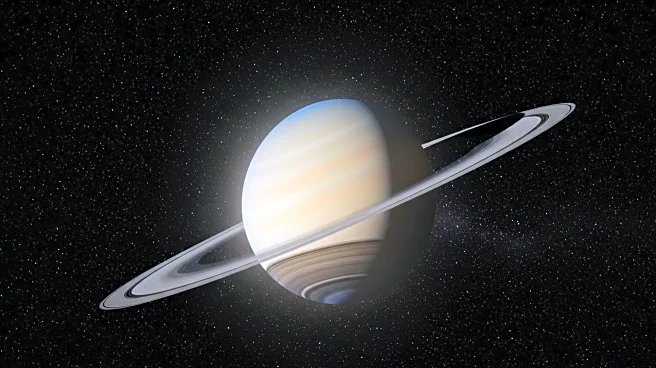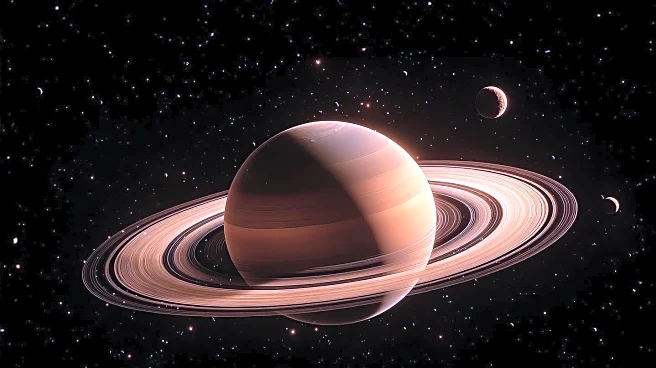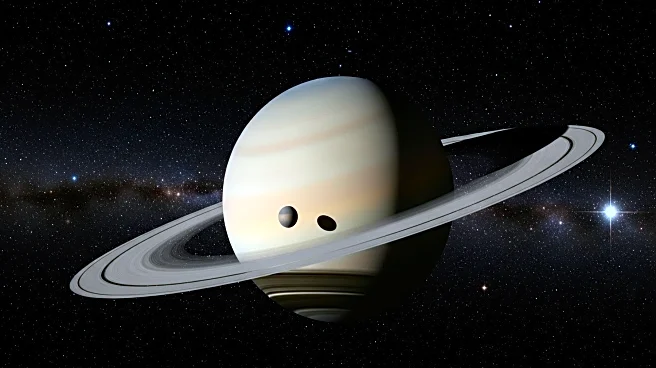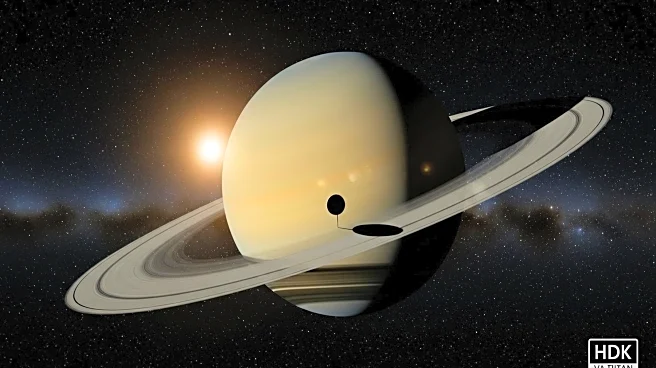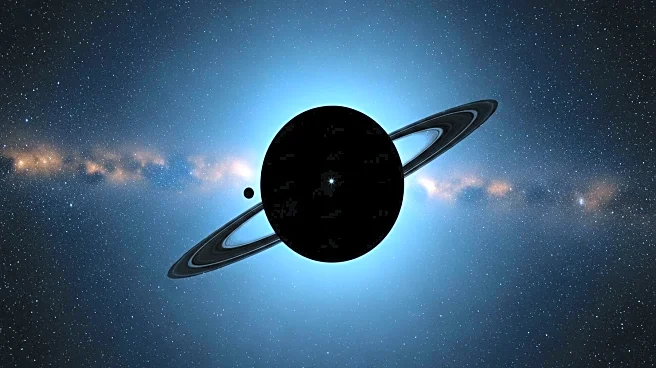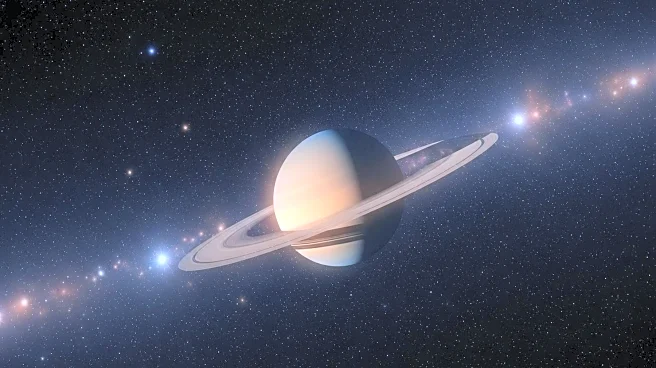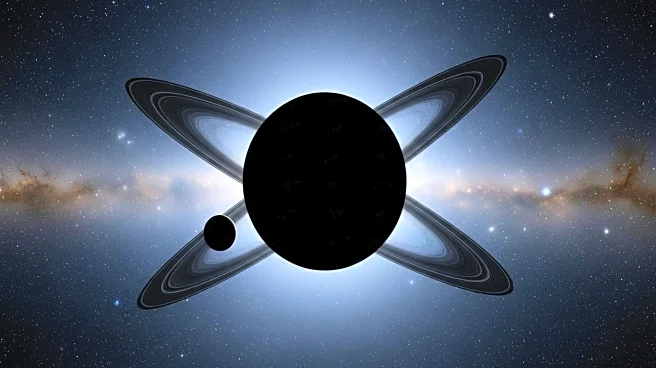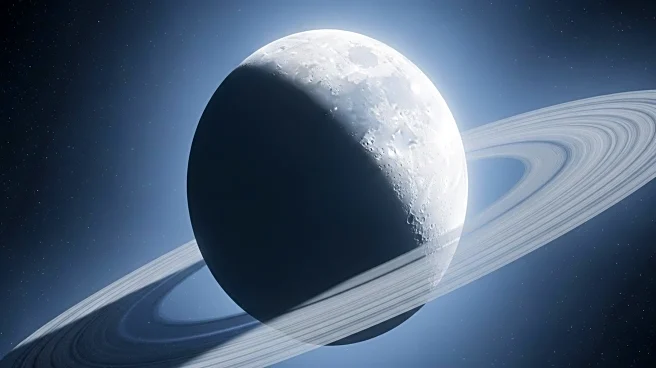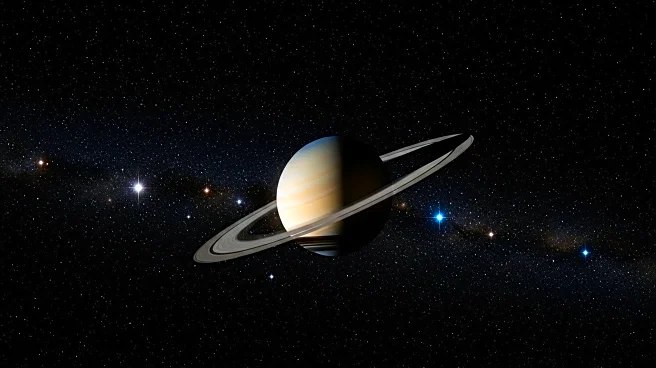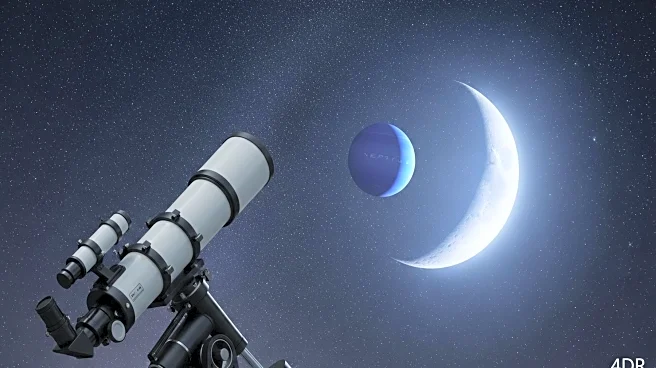What's Happening?
Saturn reached opposition at 2 A.M. EDT on September 21, 2025, making it highly visible throughout the night. This astronomical event provides optimal viewing conditions for Saturn's rings and moons. Saturn shines at magnitude 0.6 in Pisces, near the Circlet asterism, with a telescopic disk size of 19” and rings spanning 44”. The rings' tilt results in an almost edge-on perspective. Observations of Saturn's moons, including Titan, Rhea, and Dione, are possible, with Tethys undergoing an occultation behind Saturn around 2:45 A.M. EDT. Neptune, situated 2.6° from Saturn, is approaching its own opposition on September 23.
Why It's Important?
The opposition of Saturn is significant for astronomers and skywatchers as it provides a rare opportunity to observe the planet's rings and moons in detail. This event enhances public interest in astronomy and encourages educational activities related to planetary science. The visibility of Saturn's moons offers a chance for detailed study and observation, contributing to ongoing research in planetary dynamics and celestial mechanics. The proximity of Neptune's opposition adds to the excitement, allowing for comparative observations of two major planets.
What's Next?
Following Saturn's opposition, Neptune will reach its own opposition on September 23, 2025, providing another opportunity for skywatchers to observe a distant planet. Astronomers and enthusiasts will likely continue to monitor Saturn's moons and rings, gathering data that could contribute to future research and discoveries. Public interest in astronomy may lead to increased participation in stargazing events and educational programs.

